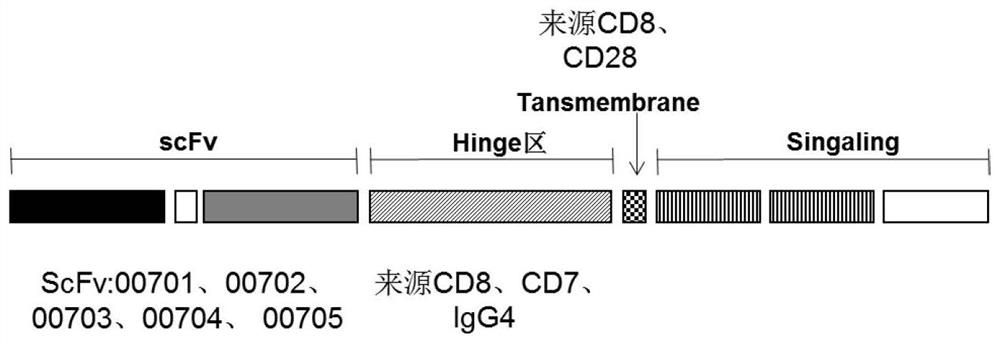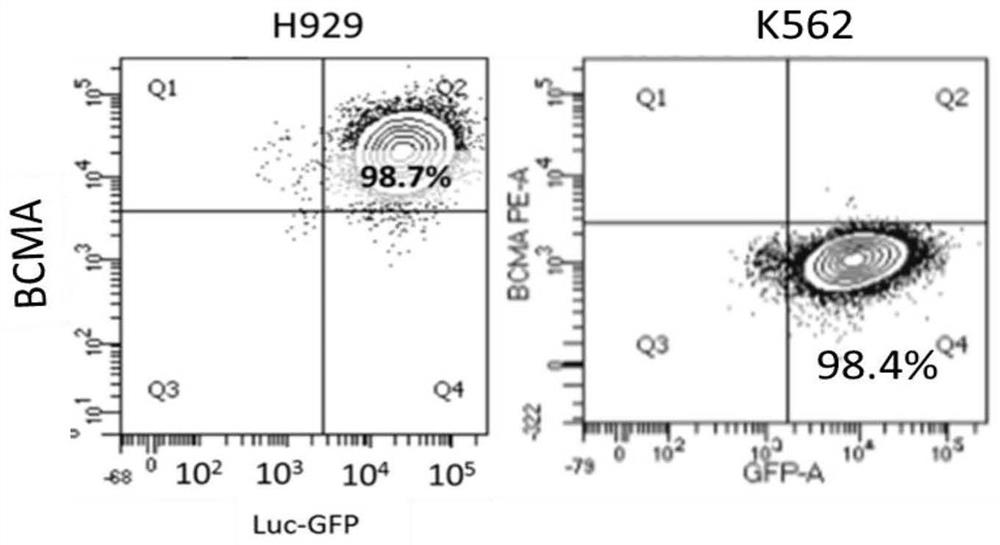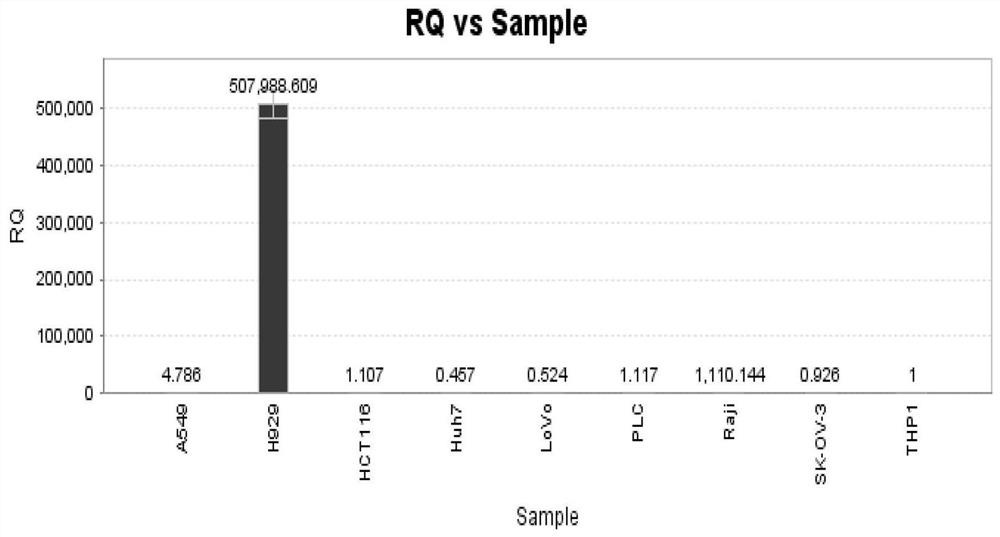Anti-BCMA CAR as well as expression vector and application thereof
A technology of expressing vectors and vectors, which is applied in the field of genetic engineering, can solve problems such as safety problems, limited efficacy, and the loss of antigen binding activity of antibodies, and achieve the effects of high safety, reduced immunogenicity, and good ability to remove tumor cells
- Summary
- Abstract
- Description
- Claims
- Application Information
AI Technical Summary
Problems solved by technology
Method used
Image
Examples
Embodiment 1
[0057] Example 1 Preparation of Lentivirus Expressing Chimeric Antigen Receptor Targeting Human BCMA Antigen
[0058] (1) Preparation of chimeric antigen receptor targeting human BCMA antigen
[0059] Synthesize chimeric antigen receptor sequences containing single-chain antibody ScFv against human BCMA antigen, hFc hinge region, transmembrane region and intracellular signal segment. Its structure is as figure 1 shown. Wherein the humanized single-chain antibody nucleotide sequence of the anti-human BCMA antigen is shown in SEQ ID NO: 20 or SEQ ID NO: 21 or SEQ ID NO: 22 or SEQ ID NO: 23 or SEQ ID NO: 24; hinge region The nucleotide sequence is the DNA sequence encoding amino acid SEQ ID NO: 16 or SEQ ID NO: 17 or SEQ ID NO: 18 or SEQ ID NO: 19; the transmembrane region is derived from CD8 or CD28 sequence; the intracellular signal segment source In CD28 or CD137 and CD3 sequence.
[0060] (2) Construction of lentiviral vectors expressing chimeric antigen receptors
[006...
Embodiment 2B
[0067] Example 2 Preparation of Chimeric Antigen Receptor Modified T Cells for BCMA Antigen
[0068] (1) Lentivirus infection of T cells
[0069] 1) Isolation of human peripheral blood mononuclear cells
[0070] Lymphocytes were separated by gradient centrifugation; after centrifugation, the second white lymphocyte layer was taken, washed with physiological saline, and cultured in RPMI 1640 complete medium containing 10% FBS to obtain human peripheral blood mononuclear cells.
[0071] 2) Lentiviral vector infects T lymphocytes
[0072] After the obtained PBMC cells were activated by anti-CD3 and CD28 monoclonal antibodies, they were infected with lentivirus; after infection, they were cultured for about 10 days to verify the biological characteristics of CAR-T cells in vitro and in vivo. The chimeric antigen receptor T cells obtained are named after the corresponding lentiviral vector.
[0073] 3) Expression detection of chimeric antigen receptor (CAR) targeting human BCMA ...
Embodiment 3
[0076] Example 3. Verification of the anti-tumor effect of T lymphocytes expressing chimeric antigen receptors targeting BCMA
[0077] BCMA-positive H929 cells stably expressing firefly luciferase (referred to as H929-luc), negative cells K562-Luc, and K562-BCMA-Luc cells with high BCMA expression constructed in vitro by K562 were used as target cells. The expression of BCMA in target cells was detected as follows: figure 2 and image 3 As shown, H929 was detected as BCMA high expression positive cells by flow cytometry and RT method, and K562 was BCMA negative cells.
[0078] Because there are too many CARs, the effectiveness verification is divided into 3 groups; the method in Example 2 is used to prepare CAR-T cells by using 3 batches of buffy coat to prepare CAR-T cells. The buffy coat is a source of peripheral blood mononuclear cells from healthy donors. The first batch of CAR-T cells was plated with effector cells according to the effector-target ratio of 16:1 / 8:1 / 4:1 / ...
PUM
 Login to View More
Login to View More Abstract
Description
Claims
Application Information
 Login to View More
Login to View More - R&D
- Intellectual Property
- Life Sciences
- Materials
- Tech Scout
- Unparalleled Data Quality
- Higher Quality Content
- 60% Fewer Hallucinations
Browse by: Latest US Patents, China's latest patents, Technical Efficacy Thesaurus, Application Domain, Technology Topic, Popular Technical Reports.
© 2025 PatSnap. All rights reserved.Legal|Privacy policy|Modern Slavery Act Transparency Statement|Sitemap|About US| Contact US: help@patsnap.com



